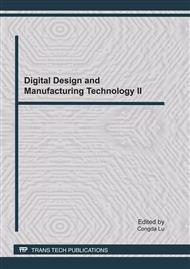p.361
p.366
p.373
p.379
p.384
p.389
p.393
p.397
p.401
Research of Missile Parameterized Design System with ProToolkit
Abstract:
The system structure of missile parameterized design is put forward to solve the repeat problems in the process of designing and manufacturing missiles. It is illustrated that in Pro/E environment the combination of missile design parameters with constraint relation is adopted to develop missile parameterized system with VC++6.0 and Pro/Toolkit used as secondary development tools for the secondary development and through the dynamic linkage, and the missile parameterized design system is integrated with Pro/E tightly. The missiles designers can obtain series of projectiles or new types of projectiles by modifying main design parameters, which making it possible to meet with a certain standard tactically and technically and shorten the cycle of designing new products.
Info:
Periodical:
Pages:
393-396
Citation:
Online since:
March 2011
Keywords:
Price:
Сopyright:
© 2011 Trans Tech Publications Ltd. All Rights Reserved
Share:
Citation:


